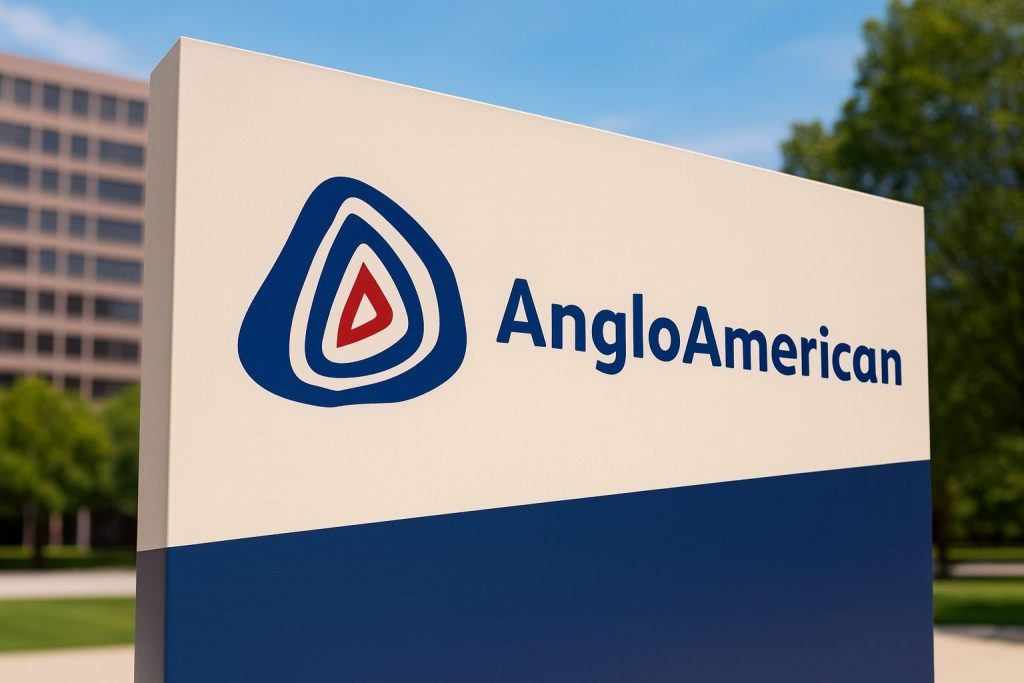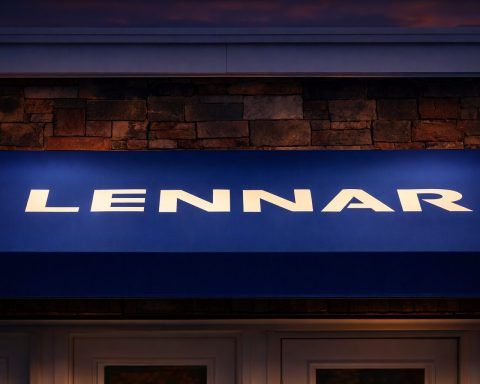London, 27 November 2025 – Boohoo Group plc, now trading as Debenhams Group on London’s AIM market under ticker DEBS, has delivered one of its most dramatic updates in years: half‑year losses have been slashed, all brands are back in profit on an adjusted basis, and the share price has jumped around 40–50% in one session. At the same time, a new executive “Group Turnaround Scheme” worth up to £222m is sparking fierce debate over corporate governance and pay. [1]
Today’s story is really three stories in one: a hard‑won operational turnaround, a bold – some say excessive – incentive plan, and a super‑volatile share price that has been crushed over the past few years but suddenly looks alive again.
Key takeaways from Boohoo / Debenhams’ 27 November 2025 update
- Period covered: Six months to 31 August 2025 (H1 FY26). [2]
- Revenue: Down 23% year‑on‑year to about £297m. [3]
- Statutory loss: Cut to roughly £3.4m from £126–130m a year earlier, depending on the metric used. [4]
- Adjusted EBITDA: Up 5% to £20m, with margin improving from 4.9% to 6.7%. [5]
- Debenhams marketplace: GMV up 20%, EBITDA up 50%, margin around 15%; marketplace now about 32% of GMV. [6]
- Net debt: Reduced to about £111m, down from roughly £143m in the prior year period. [7]
- Guidance: Full‑year EBITDA expected at around £45m, with double‑digit growth targeted in FY27 and a medium‑term goal of £1bn GMV and £50m+ EBITDA for Debenhams alone. [8]
- DEBS share price: Recently as low as 10.4p; today trading around 16–17p, up roughly 40–50% on the day. [9]
Half‑year results: losses slashed, but growth still missing
The turnaround story is visible first in the income statement.
For the half year to 31 August 2025, group revenue fell 23% to about £296.9m from £385.4m a year earlier, reflecting deliberate cuts to unprofitable sales and tougher trading in youth fashion. Post‑returns GMV also dropped 23% to £406.9m, while pre‑returns GMV was down 19% to £630.8m. [10]
Despite that hefty top‑line decline, profitability metrics improved markedly:
- Adjusted EBITDA rose from £19m to £20m, with margin rising from 4.9% to 6.7%, helped by heavy cost‑cutting and a shift towards a marketplace model. [11]
- Adjusted EBIT turned positive at £1.8m, signalling a return to operating profitability on an adjusted basis. [12]
- The company slashed its statutory loss after tax for continuing operations to about £3.4m, compared with more than £120m in the equivalent period last year. [13]
- Depending on whether you look at pre‑tax or after‑tax numbers, the headline loss reduction is from roughly £126–130m to low single‑digit millions. [14]
On the balance‑sheet side, net debt has been cut to around £111m from about £143m, helped by asset disposals, lower capex and tighter inventory management. [15]
Management insists the turnaround is “gathering real pace”, pointing to better cashflow, leaner operations and all brands now contributing positively at the adjusted EBITDA level. [16]
Debenhams marketplace now the growth engine
If the old Boohoo model was fast‑fashion driven by its own brands, the new Debenhams Group story is increasingly about a capital‑light marketplace anchored on the revived Debenhams name.
Key points from today’s updates:
- Debenhams division GMV climbed around 20%, with EBITDA up about 50% and margins near 15% – in stark contrast to declines elsewhere in the group. [17]
- Management now has “clear line of sight” to £1bn GMV and £50m+ EBITDA from the Debenhams brand alone within three years, aiming for EBITDA margins approaching 20%. [18]
- Marketplace activity across the group has grown to around 32% of GMV, up sharply year‑on‑year, as more third‑party brands use Debenhams as a platform. [19]
- The number of marketplace partners has roughly doubled to about 20,000 in a year, highlighting the scale of the pivot. [20]
Operationally, Debenhams Group has pushed hard to become stock‑light and capex‑light:
- Inventory has been cut to about £68m, down significantly from prior levels.
- Capital expenditure in the half fell to roughly £7.5m. [21]
- Fixed costs have been reduced by around £160m, with further savings targeted through warehouse closures and consolidations in Daventry, the US and Burnley. [22]
The group is also talking up AI and technology investments to improve demand forecasting, pricing and customer experience, framing Debenhams as a scalable online platform rather than a traditional single‑brand retailer. [23]
Youth brands and Karen Millen: painful cuts, but now profitable
The price of this turnaround has been steepest in the youth brands, historically Boohoo’s growth engine:
- GMV in the youth segment (including Boohoo, BoohooMAN and PrettyLittleThing) has fallen about 41%, reflecting the removal of unprofitable product lines and weaker demand in fast‑fashion among younger shoppers. [24]
- Karen Millen GMV dropped about 31%, although the brand remains profitable on an adjusted EBITDA basis after a repositioning towards premium lifestyle and licensing. [25]
Management emphasises that all brands are now EBITDA‑positive on an adjusted basis, and that GMV declines have been moderating quarter by quarter as the new marketplace‑first strategy beds in. [26]
However, analysts warn that Debenhams cannot rely on cost cuts and mix shifts forever. The group still faces intense competition from Shein, Temu and other ultra‑fast fashion rivals, and must prove that its youth brands can grow again in a more disciplined, profitable way. [27]
The £222m Group Turnaround Scheme: huge upside, huge controversy
The other headline-grabber today is the new “Group Turnaround Scheme” (GTS) – a long‑term incentive plan designed to retain senior management and align them with a multi‑year turnaround.
According to regulatory filings and multiple reports:
- The scheme is structured as a growth share plan giving management around 6% of the increase in market capitalisation if the share price rises from 35p up to £3. [28]
- The maximum total pool under the plan is about £222m, based on a target market cap of roughly £4.2bn at a £3 share price – around 25 times the company’s value before the announcement. [29]
- CEO Dan Finley could receive up to £148.1m in shares if the share price hits and sustains £3 over a multi‑year period; CFO Phil Ellis could earn up to £14.8m. There is still a smaller payout if the price reaches at least 60p, with awards kicking in from 35p. [30]
Most controversially, the board is not putting the scheme to a shareholder vote. Debenhams argues that a “major competitor” with a near‑30% stake – widely understood to be Frasers Group, controlled by Mike Ashley – has repeatedly tried to block its strategic plans, including the rebrand from Boohoo to Debenhams and board changes. [31]
Criticism has been swift:
- The Guardian notes that investors have already suffered a share price fall of around 96% over five years, yet executives could now be in line for payouts approaching nine figures if the turnaround succeeds. [32]
- Analysts at Hargreaves Lansdown and others describe the move as another example of weak governance at Boohoo/Debenhams, given the decision to bypass shareholders on such a large pay package. [33]
Supporters, including analysts at Panmure Liberum, argue that the plan is highly performance‑dependent and that the turnaround is progressing unusually quickly for a listed retailer, justifying aggressive incentives tied to genuinely transformational targets. [34]
Whatever your view, the GTS makes one thing clear: management’s rewards are now tightly tied to an extraordinary re‑rating from penny‑stock territory back to a multi‑billion‑pound valuation.
Why the DEBS share price is surging today
The market reaction to today’s news has been dramatic:
- DEBS shares were recently trading around 11–12p, having hit a 52‑week low of 10.4p on 24 November 2025. [35]
- Following the half‑year results and GTS announcement, the stock has traded between roughly 13p and 17p, with different sources citing intraday gains of about 20% to nearly 50%. [36]
- The London South East quote shows the price at 16.55p, up 4.95p (42.67%) on the day, implying a market cap of roughly £223m and a negative trailing P/E given the lingering losses. [37]
Commentators are split on what this move means:
- Optimists at outlets like MarketWatch, The Motley Fool and Proactive Investors see the combination of slashed losses, positive EBITDA, improving cashflow and a focused marketplace strategy as the early stages of a potential multi‑bagger recovery – albeit from a very low base. [38]
- Others argue the rally mostly reflects a short‑term relief bounce after extreme pessimism, pointing out that even after today’s jump, DEBS trades at a fraction of its past highs and still faces structural challenges in fast fashion and e‑commerce. [39]
For existing shareholders, today’s surge is a rare dose of good news after years of pain. For new investors, the combination of higher volatility, high execution risk and an aggressive incentive scheme makes DEBS one of the more speculative names on the UK market.
Strategy, outlook and what to watch next
Management is trying to reposition Debenhams Group as a profitable, scalable online marketplace, not just a fashion brand owner:
- The group expects FY26 EBITDA of around £45m and double‑digit EBITDA growth in FY27, even as it plans further cost savings and capex discipline. [40]
- It aims to return to single‑digit revenue growth in FY27, after the current period of deliberate downsizing and category rationalisation. [41]
- The medium‑term ambition remains £1bn GMV and £50m+ EBITDA for Debenhams alone, with all brands marketplace‑enabled and increasingly international. [42]
- The board still wants to formally change the listed company name from Boohoo Group plc to Debenhams plc, once it can secure agreement from major shareholders such as Frasers Group. [43]
For investors and industry watchers, the key questions over the next 12–24 months will be:
- Can Debenhams hit its marketplace targets?
Watch GMV growth, EBITDA margins and partner numbers to see whether the platform model scales as planned. [44] - Will the youth brands stabilise and grow again?
The group can’t rely on marketplace alone forever; Boohoo, PrettyLittleThing and BoohooMAN need to show disciplined, profitable growth in a crowded space. [45] - How will shareholders respond to the GTS pay plan?
Even without a binding vote, institutional investors and governance bodies may exert heavy pressure if the plan is seen as overly generous or poorly aligned. [46] - Will the balance sheet continue to improve?
Debt reduction, working‑capital discipline and any asset disposals will be scrutinised closely given the group’s history of thin margins and high volatility. [47] - Can management rebuild trust after past controversies?
From labour‑practice scandals to previous bonus rows, Boohoo/Debenhams has a trust deficit to overcome with stakeholders, regulators and customers alike. [48]
Final word
On 27 November 2025, Boohoo Group plc / Debenhams Group has delivered exactly what long‑suffering shareholders have been hoping to see: real progress on profits, cash, and strategy, finally reflected in a sharp share price move. At the same time, the £222m Group Turnaround Scheme ensures that debate over governance and fairness will run just as hot as the share price chart.
As always, this article is for information only and does not constitute investment advice. DEBS remains a high‑risk, high‑volatility stock where outcomes depend heavily on management execution over the next few years.
References
1. www.sharesmagazine.co.uk, 2. www.lse.co.uk, 3. www.sharesmagazine.co.uk, 4. www.sharesmagazine.co.uk, 5. www.sharesmagazine.co.uk, 6. www.sharesmagazine.co.uk, 7. www.sharesmagazine.co.uk, 8. www.sharesmagazine.co.uk, 9. www.lse.co.uk, 10. www.sharesmagazine.co.uk, 11. www.sharesmagazine.co.uk, 12. kalkinemedia.com, 13. kalkinemedia.com, 14. www.sharesmagazine.co.uk, 15. www.sharesmagazine.co.uk, 16. www.lse.co.uk, 17. www.sharesmagazine.co.uk, 18. www.sharesmagazine.co.uk, 19. kalkinemedia.com, 20. kalkinemedia.com, 21. kalkinemedia.com, 22. www.theguardian.com, 23. uk.advfn.com, 24. www.sharesmagazine.co.uk, 25. www.sharesmagazine.co.uk, 26. www.sharesmagazine.co.uk, 27. www.theguardian.com, 28. www.investegate.co.uk, 29. www.investegate.co.uk, 30. www.sharesmagazine.co.uk, 31. www.sharesmagazine.co.uk, 32. www.theguardian.com, 33. www.theguardian.com, 34. www.reuters.com, 35. www.lse.co.uk, 36. www.sharesmagazine.co.uk, 37. www.lse.co.uk, 38. www.marketwatch.com, 39. www.lse.co.uk, 40. www.sharesmagazine.co.uk, 41. www.investing.com, 42. www.sharesmagazine.co.uk, 43. www.sharesmagazine.co.uk, 44. kalkinemedia.com, 45. www.sharesmagazine.co.uk, 46. www.reuters.com, 47. kalkinemedia.com, 48. en.wikipedia.org










